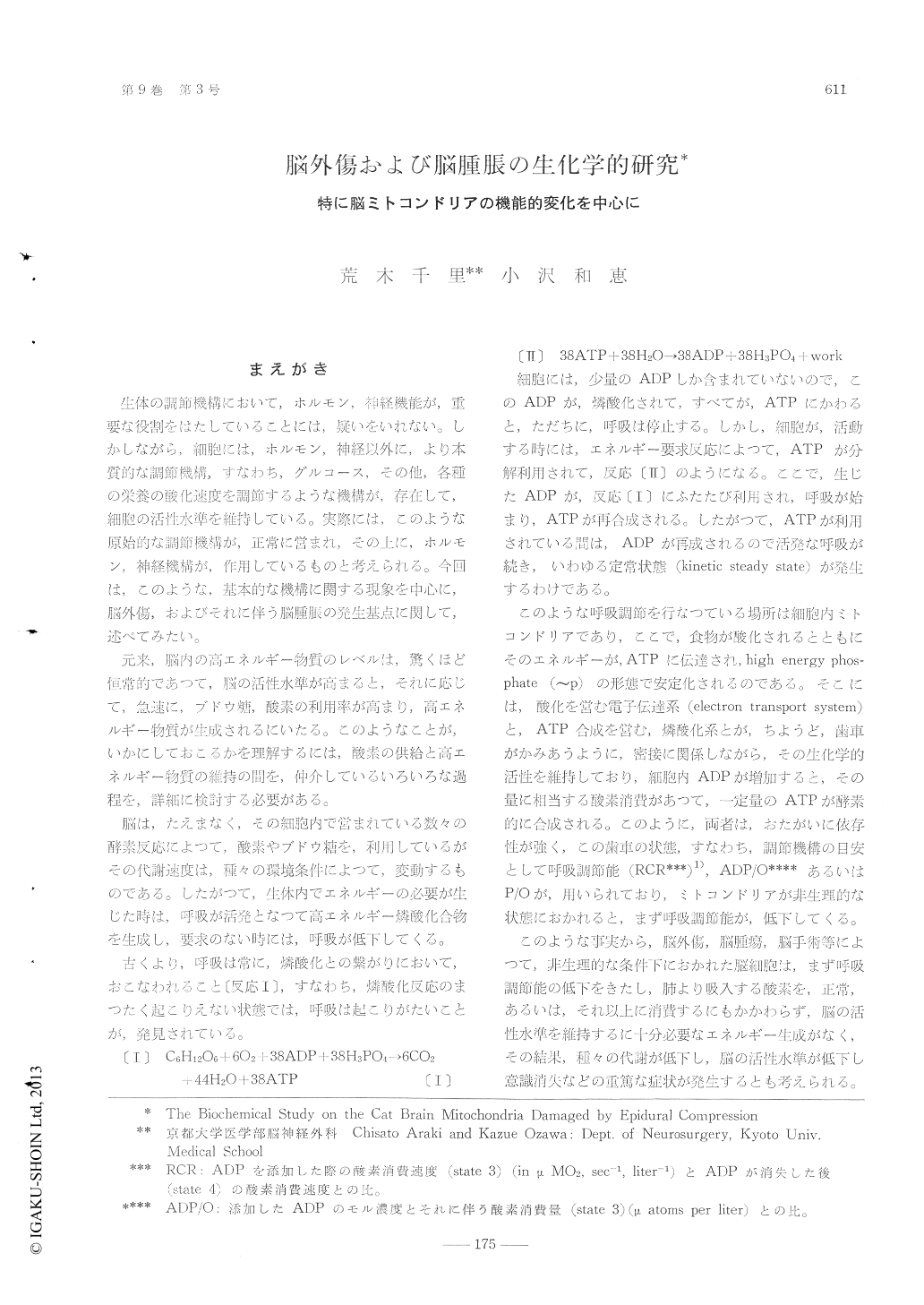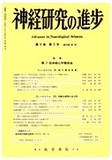Japanese
English
- 有料閲覧
- Abstract 文献概要
- 1ページ目 Look Inside
まえがき
生体の調節機構において,ホルモン、神経機能が,重要な役割をはたしていることには,疑いをいれない。しかしながら,細胞には,ホルモン,神経以外に,より本質的な調節機構,すなわち,グルコース,その他,各種の栄達の酸化速度を調節するような機構が,存在して,細胞の活性水準を維持している。実際には,このような原始的な調節機構が,正常に営まれ,その上に,ホルモン,神経機構が,作用しているものと考えられる。今回は,このような,基本的な機構に関する現象を中心に,脳外傷,およびそれに伴う脳腫脹の発生基点に関して,述べてみたい。
元来,脳内の高エネルギー物質のレベルは,驚くほど恒常的であつて,脳の活性水準が高まると,それに応じて,急速に,ブドウ糖,酸素の利用率が高まり,高エネルギー物質が生成されるにいたる。このようなことが,いかにしておこるかを理解するには,酸素の供給と高エネルギー物質の維持の間を,仲介していろいろいろな過程を,詳細に検討する必要がある。
The biochemical study was extensively performed onthe cat brain mitochondria damaged by epidural comp-ression. The activity of the mitochondria from the trau-matized brain is decreased variously in their RCR andADP/O. The change in the mitochondrial activity ap-pears to be closely related to the clinical symytoms ofthe brain-damaged animals. The similar change in themitochondrial activity could be induced by the additionof the endogenous uncoupling factor (BMIES), whichwas obtained by extraction of the brain mitochondriawith isooctane, to the normal mitochondria in vitro.
The moderate decrease in the biochemical activity ofthe injured brain or of the BMIES-treated mitochond-ria could be recovered by the addition of serum albu-min to the mitochondria or by keeping the mitochondri-al preparation at 0° for two hours.
The possible mechanism of the development of brainswelling was discussed from the viewpoint of the bio-chemical change in the mitochondria.

Copyright © 1965, Igaku-Shoin Ltd. All rights reserved.


